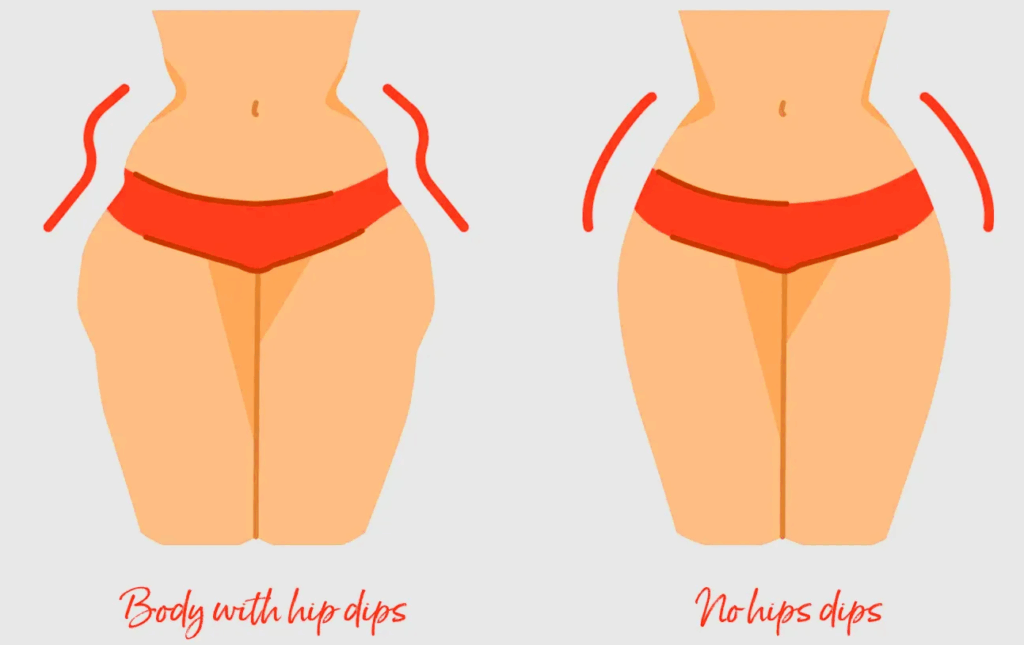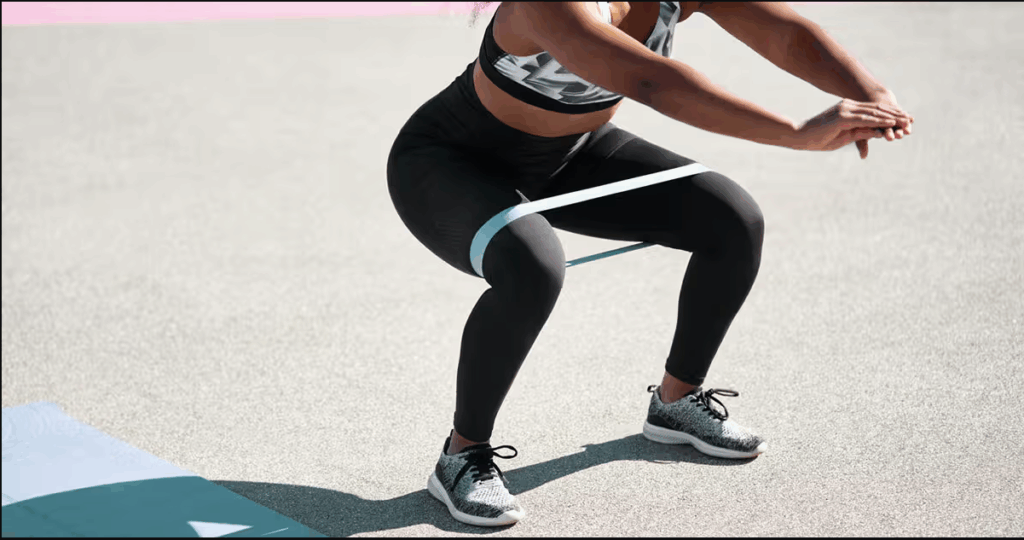Hip dips are natural inward curves just below the hip bones. They develop because of the pelvic shape and the distribution of muscle and fat in the body. Although hip dips are normal anatomical features, they are often a target of aesthetic fitness goals for those wanting a smoother, rounder hip line.
Understanding Hip Dips
The anatomy behind hip dips is deeply rooted in the structure of the pelvis. Depending on the width of the hip bones and the spacing between the ilium and femur, some individuals will naturally have more pronounced indentations. Hip dips become more noticeable due to the fat and muscle mass around the hips.
It is important to clarify common myths: hip dips are not “problem areas” that need fixing. They are not flaws but simply a reflection of individual skeletal structure. However, it is possible to enhance the surrounding muscles, specifically the glutes and hip abductors, to create a rounder and smoother outer hip appearance.
Can You Remove Hip Dips?
Set realistic expectations for fitness goals. Hip dips largely reflect bone structure, and complete removal is impossible without surgery. However, targeted training and proper nutrition can build muscle around the hip dip for a visible transformation.
Strengthening the gluteus medius, gluteus minimus, and the upper portions of the gluteus maximus helps in building rounder hips. Adjusting body fat levels through strength training and a healthy diet can further enhance appearance by creating a fuller, more contoured hip shape.

Best Workouts for Curvier, Fuller Hips
Certain exercises are particularly effective at addressing hip dips and creating the illusion of rounder hips. Glute bridges and hip thrusts are cornerstone movements that focus on both the gluteus maximus and medius, essential for overall hip fullness.
Bulgarian split squats add a unilateral challenge that enhances hip stability and volume. Lateral band walks and monster walks effectively target the smaller stabilizing muscles of the hips, promoting a wider and firmer look.
Curtsy lunges help shape the outer hips and thighs, creating a more dramatic curve from the waist down. Cable kickbacks and abduction exercises are excellent for isolating and building the muscles responsible for a fuller, more sculpted appearance.
How to Structure Your Hip-Sculpting Workout Routine
Train the glutes and hips two to three times per week to achieve a noticeable hip dip transformation. Consistency, proper exercise selection, and progressive overload are key.
Each session should include multiple sets of 8–15 repetitions, focusing on controlled movement and a full range of motion. Progressive overload—gradually increasing weights or resistance—ensures continued growth over time.
Balance strength training with moderate cardio and allow muscles to repair and grow. Long-term results also include stretching and mobility work for optimal performance and injury prevention.

Nutrition Tips to Support Your Goals
Building rounder hips requires more than just training; nutrition plays a critical role. Eating in a mild calorie surplus may be necessary to provide the energy needed for muscle growth.
A high-protein diet incorporating lean meats, dairy, legumes, and – where necessary – supplementation supports glute muscle repair and hypertrophy. Water also maintains muscle function and speeds up recovery for effective and sustainable workouts.
Restful sleep and balanced meals promote maximum training and help you achieve a fuller, curvier hip appearance.

Other Factors That Influence Hip Shape
While targeted workouts and good nutrition can significantly enhance hip appearance, it is vital to recognize the role of genetics. Bone structure largely determines the baseline shape of the hips, and no amount of training can completely override genetic predispositions.
Posture and mobility can also influence how the hips are perceived. Improved posture and pelvic alignment can create a smoother, more upright appearance, while addressing overall body composition can naturally accentuate curves.
Most importantly, it’s essential to embrace individual body shapes and celebrate your progress. A hip dip transformation is as much about self-confidence and body positivity as it is about physical changes.
Frequently Asked Questions
What are the best exercises for hip dips?
The best exercises include glute bridges, hip thrusts, Bulgarian split squats, lateral band walks, curtsy lunges, and cable kickbacks, all of which help build muscle in the hip area.
How long does it take to see a hip dip transformation?
The first noticeable results may appear after 8 to 12 weeks of consistent training and a healthy diet, though individual timelines may vary based on genetics and fitness level.
Can losing weight fix hip dips?
Losing weight may reduce overall body fat, but it won’t eliminate hip dips. In many cases, combining fat loss with strategic muscle building is more effective in achieving a curvier hip appearance.





